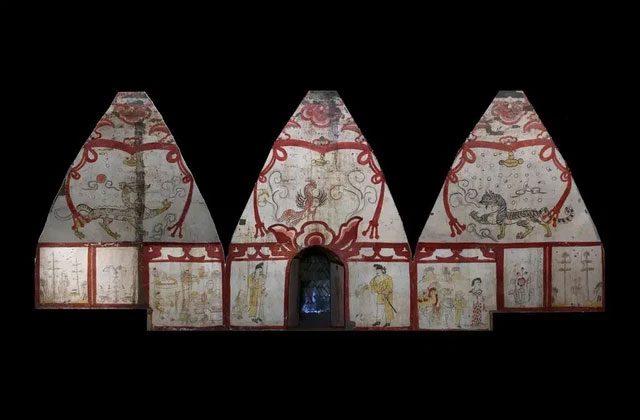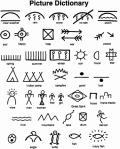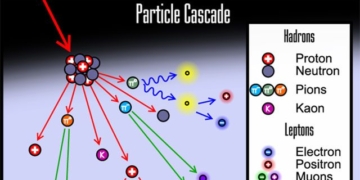The creator of this lavish ancient tomb may also be the one who decorated the tomb of Emperor Wang Shenzhi of the Min Dynasty during the Five Dynasties and Ten Kingdoms period.
According to Heritage Daily, archaeologists have discovered an intricately decorated ancient tomb from the Tang Dynasty (618-907 AD) during excavations in Shanxi Province, China.

The lavish entrance of the ancient Chinese tomb, along with some wall paintings – (Photo: SHANXI PROVINCIAL ARCHAEOLOGICAL INSTITUTE, CHINA).
After several years of excavation, part of the ancient tomb has been revealed, featuring an entrance adorned with swirling floral motifs and a pair of cloaked statues, possibly guardians of the tomb complex.
According to the Shanxi Provincial Archaeological Institute, the passage leading to the main burial chamber has a conical ceiling with four mythical creatures from Chinese mythology, including a dragon and possibly a phoenix.
Additionally, the walls of the chamber are decorated with a series of panels resembling thick red ribbons.
On the walls are illustrations depicting various aspects of daily life, with some figures strolling amidst a rural backdrop, complemented by overhead foliage.
Archaeologists note that this style is characteristic of the Tang Dynasty, referred to as the “tree base style.”
Notably, the wall and ceiling paintings are rendered in bright colors such as white, red, yellow, black, green, and orange.
Dating results indicate that the tomb dates back to the late Tang Dynasty. The identity of the tomb’s owner remains a mystery.
Following the fall of the Tang Dynasty, China entered a chaotic period known as the Five Dynasties and Ten Kingdoms, which lasted from 907 to 979, before the Song Dynasty once again unified the country.
Although this ancient tomb has been identified as dating from the 8th century, the beautiful entrance, as well as the wall and ceiling paintings, may have been executed later, in the late Tang period.
Archaeologists suspect that the artist of the paintings may also have decorated the tomb for Emperor Wang Shenzhi of the Min Dynasty, the founder of the Min Dynasty during the Five Dynasties and Ten Kingdoms.





















































